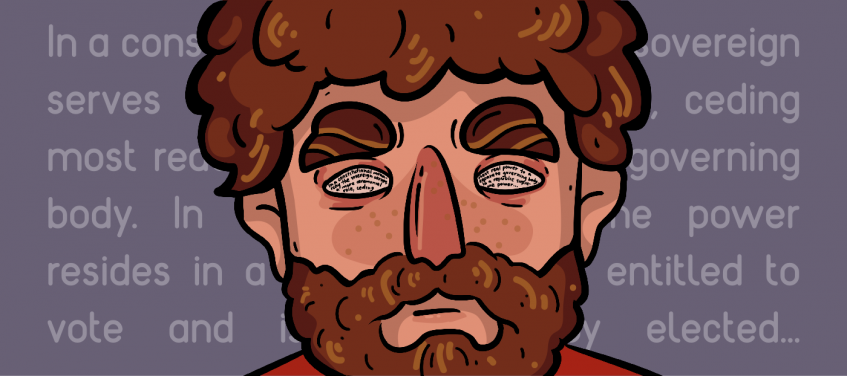Proofreading Tips That Actually Work

We all know that the moment when you finish the last sentence of your essay is the most pleasant one. But hey, there is one more step to take before your work is completed – to edit and proofread your work. Many students hate that step, and we definitely know why. That’s why we have a few tips for you on how to do it quickly and effectively.
Print Out
It’s not a secret that people perceive information differently, according to our learning type, for example, visual or auditory learners. And it’s true that not everyone can equally well perform proofreading because of specifics and individual factors of their perception.
If you are one of those people, who find it hard to look for errors in your written pieces, you might try printing your papers out. There are multiple reasons why you will benefit from this:
- Text on a screen and text on paper are read differently.
- It’s easier to actually read and find spelling or punctuation mistakes when you have your text printed instead of just looking through.
- You might find it easier to edit your work with a pencil, adding more ideas just as you read.
- You can just hand your work to someone among your family or friends to ask them to read it.
Printing out is not always an option. However, if you have such an opportunity, you should definitely use it when you really need to tailor your essay or report and polish it before sending it to your professor. By the way, check out our post on how to write an email to your professor properly.
PEEL
It’s not only crucial to check your punctuation and grammar when you are proofreading your paper, but also to check if your paragraphs are coherent and logical. If you don’t know how to make them look good, here is a technique that will help you out. It is named PEEL which stands for:
- Point. Start your paragraph with a sentence that sums up the following information, representing a concise idea.
- Example and evidence. Make sure you have some examples and proves that can support your idea. Evidence is crucial if you need to make your point.
- Explanation. Briefly explain what your idea is about, why the evidence proves your words.
- Link. This is the sentence that should reveal what the fact which your paragraph is about means regarding the topic of your paper.
If every single part of the paragraph is in its place, then your paper has a great logical flow and sounds professional and clear. Make sure each of your paragraphs is written according to the scheme of PEEL.
Little Helpers
Not always can we count on our attentiveness and concentration when it comes to finding errors in a big portion of written text. That’s why it’s always great when you have some tools that can ease your college life and help you with this rigorous task. Here are a few tools that you might want to try.
Grammarly Plug-In
This little helper can ease your proofreading a lot. And we really mean it. If you haven’t tried it yet, you should definitely do so. Just install this plug-in, and you will always know that this genius will instantly check all your spelling and punctuation mistakes. It’s not always 100% right, so be sure to check which edits it suggests – eventually, AI is not as good as humans yet.
Online Grammar Checkers
You can surely find a lot of online resources that offer punctuation and grammar checking tools. They work in pretty much the same manner with a high level of proofreading quality. But you surely will need to read your edited text through at least once – not all of the errors can be properly corrected by the tools like this. Make sure you also check your text for plagiarism, as such resources can do it too. You don’t want your piece to be considered as a stolen paper, right?
Professional Team
If you want your paper to be checked not by a tool but by a human being with academic background, you can turn to our team as we can do proofreading and editing too. We have a lot of writers who will be glad to polish your piece if you need it or add some parts that are missing.
Put It Aside
Another tip for everyone who finds it hard to proofread papers and which actually does work without any exception is to put your piece aside for some time to get back to it later. The trick is simple yet effective and works because of the specifics of the human brain.
Every time you work on a long paper that requires much effort, you face a lack of ideas and can’t always notice evident mistakes. That’s why you need to look at your work with fresh eyes. It can be achieved if you get back to your work after some break. It might take a few hours or even a few days; it all depends. But when you distract a little, it’s much easier to proofread your paper after that.
Read Backwards
Another tip for proofreading and editing your work might seem a little bizarre, but you actually will find it pretty useful. There is a known fact that the human brain gets used to seeing and reading words every day. It gets used to it so much that we can even read words with lots of mistakes and still understand what is written. It’s because our brain omits these mistakes, finding matches in our memory with the words that we know.
That’s why sometimes we look through the text and see no mistakes – our brain just lets us read it without any difficulties. So, what you might want to do to make sure you don’t miss any grammar errors, is to read your text backward.
How does it work? You need to break this pattern that your brain creates, autocorrecting the mistakes because of the context. Just read your work word by word, starting with the end of it. This way, you won’t be concentrated on full sentences but the words themselves. Another hack that some editors use is to print your work and read it through the mirror. Let’s face it – this is another level of editing.
Tips on Proofreading for Dyslexics
It’s not a secret that dyslexia makes it so much harder for students to write their papers and proofread them when they finish. These are a few tips for students with dyslexia on how they can ease this process:
- Read your paper aloud and listen to your own voice.
- Make sure you know which words give you problems. Search for them while you are editing the document. You might use different colors to highlight these words and double-check them.
- Read your paper forward to check the flow and then backward.
- Look up complex words in the dictionary. It’s better to spend some additional time on that than trying to just guess.
- Print your paper and tap each word while you are reading to avoid skipping.
- Highlight the keywords as you read to make sure each paragraph is linked to the topic and conveys the message through these keywords.
- Find the font that is the most comfortable for you to perceive text through. You might need to use a larger font or the cursive one.
We hope that these tips will help you with proofreading and editing your piece and will save you time.










